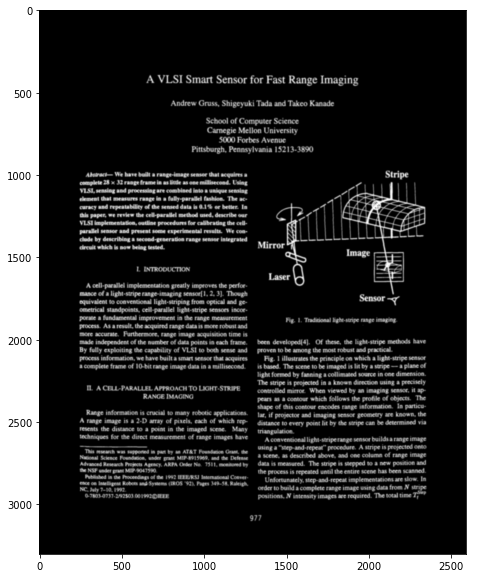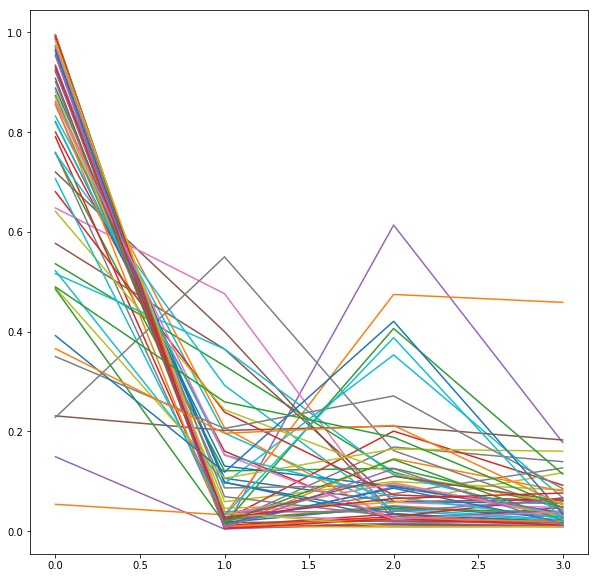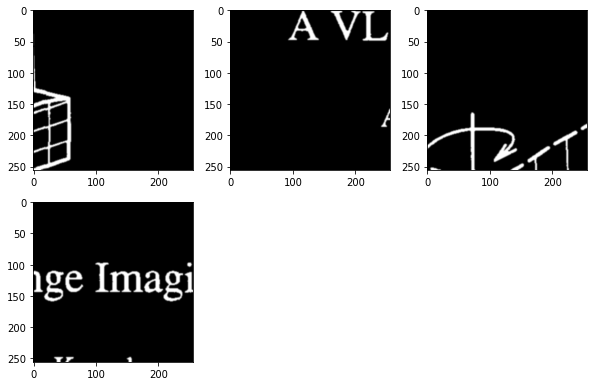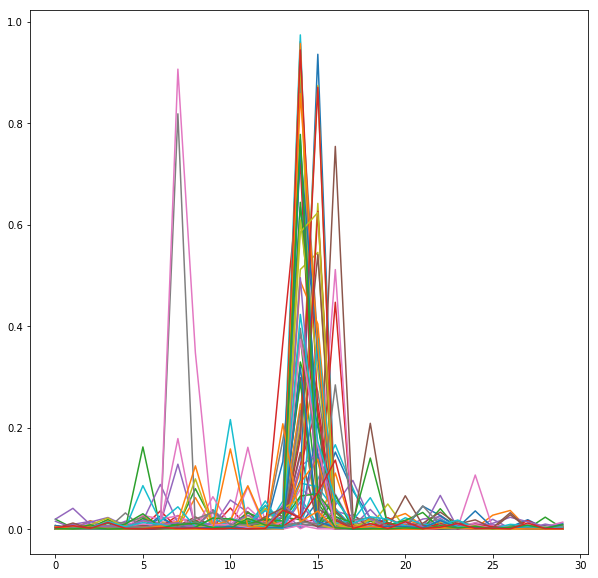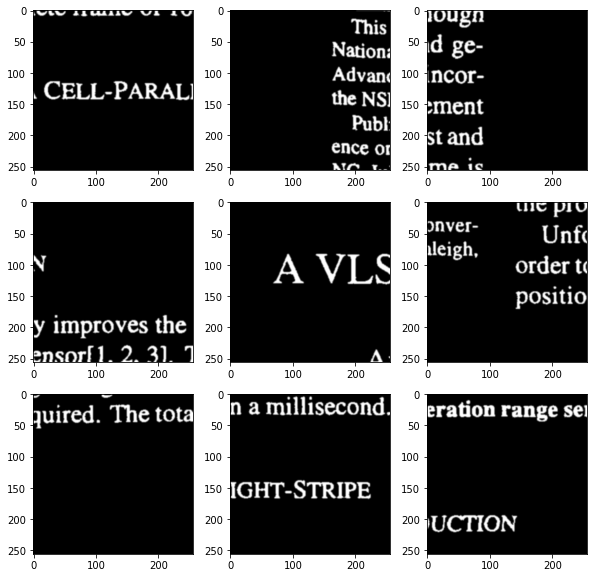When pages are scanned, they often are scanned at different orientations. For traditional flatbed scanners and many camera-based scanners, there are two different cases:
- rotations by multiples of 90 degrees
- rotations by small angles relative to the pixel coordinate system ("skew")
The ocrorot library estimates both page rotation and page skew using deep learning. The models for doing this actually end up being rather different because page rotation is a fairly straightforward shape recognition problem, while page skew estimation involves fine long range geometric modeling (estimates should be accurate to about 0.2 degrees).
The rotation models used here are trained on binarized, white-on-black, 300 dpi pages; you can retrain for other kinds of page images.
%pylab inline
rc("image", cmap="gray", interpolation="bicubic")Populating the interactive namespace from numpy and matplotlib
figsize(10, 10)
import ocrorot
reload(ocrorot)<module 'ocrorot' from 'ocrorot/__init__.pyc'>
%%bash
model=rot-000003456-020897.pt
test -f $model || wget -nd https://storage.googleapis.com/tmb-models/$modelThe model itself is a fairly typicall object recognition pipeline with max pooling and batch normalization.
rot = ocrorot.RotationEstimator("rot-000003456-020897.pt")
rot.modelSequential(
(0): CheckSizes [(1, 128), (1, 512), (256, 256), (256, 256)]
(1): Conv2d(1, 8, kernel_size=(3, 3), stride=(1, 1), padding=(1, 1))
(2): BatchNorm2d(8, eps=1e-05, momentum=0.1, affine=True)
(3): ReLU()
(4): MaxPool2d(kernel_size=(2, 2), stride=(2, 2), dilation=(1, 1), ceil_mode=False)
(5): Conv2d(8, 16, kernel_size=(3, 3), stride=(1, 1), padding=(1, 1))
(6): BatchNorm2d(16, eps=1e-05, momentum=0.1, affine=True)
(7): ReLU()
(8): MaxPool2d(kernel_size=(2, 2), stride=(2, 2), dilation=(1, 1), ceil_mode=False)
(9): Conv2d(16, 32, kernel_size=(3, 3), stride=(1, 1), padding=(1, 1))
(10): BatchNorm2d(32, eps=1e-05, momentum=0.1, affine=True)
(11): ReLU()
(12): MaxPool2d(kernel_size=(2, 2), stride=(2, 2), dilation=(1, 1), ceil_mode=False)
(13): Conv2d(32, 64, kernel_size=(3, 3), stride=(1, 1), padding=(1, 1))
(14): BatchNorm2d(64, eps=1e-05, momentum=0.1, affine=True)
(15): ReLU()
(16): Img2FlatSum
(17): Linear(in_features=64, out_features=64, bias=True)
(18): BatchNorm1d(64, eps=1e-05, momentum=0.1, affine=True)
(19): ReLU()
(20): Linear(in_features=64, out_features=4, bias=True)
(21): Sigmoid()
(22): CheckSizes [(1, 128), (4, 4)]
)
image = 1 - imread("testdata/W1P0.png")
imshow(image)<matplotlib.image.AxesImage at 0x7f5584f5db90>
This page is already at the correct rotation, so the rotation we're getting should be zero.
rot.rotation(image)0.0
The page rotation estimator works by sampling a number of 256x256 patches from the image and individually classifying them into four classes (corresponding to 0, 90, 180, and 270 degrees). We can plot the output from all these classifiers.
for p in rot.preds: plot(p)Some of the patches make the wrong prediction because they just don't contain enough information. We could identify these patches by adding a "reject" class and retraining, but that's not been worth it.
for i, p in enumerate(rot.bad_patches()):
if i>=9: break
subplot(3, 3, i+1)
imshow(p)del rot%%bash
model=logskew-000015808-000132.pt
test -f $model || wget --quiet -nd https://storage.googleapis.com/tmb-models/$modelThe skew estimator is a fairly unusual model because it propagates through a global FFT (Spectrum).
sk = ocrorot.SkewEstimator("logskew-000015808-000132.pt")
sk.model/usr/local/lib/python2.7/dist-packages/torch/serialization.py:325: SourceChangeWarning: source code of class 'ocrorot.layers.Spectrum' has changed. you can retrieve the original source code by accessing the object's source attribute or set `torch.nn.Module.dump_patches = True` and use the patch tool to revert the changes.
warnings.warn(msg, SourceChangeWarning)
Sequential(
(0): CheckSizes [(1, 128), (1, 512), (256, 256), (256, 256)]
(1): Conv2d(1, 8, kernel_size=(5, 5), stride=(1, 1), padding=(2, 2))
(2): BatchNorm2d(8, eps=1e-05, momentum=0.1, affine=True)
(3): ReLU()
(4): Spectrum
(5): Conv2d(8, 4, kernel_size=(5, 5), stride=(1, 1), padding=(2, 2))
(6): BatchNorm2d(4, eps=1e-05, momentum=0.1, affine=True)
(7): ReLU()
(8): Reshape((0, [1, 2, 3]))
(9): Linear(in_features=262144, out_features=128, bias=True)
(10): BatchNorm1d(128, eps=1e-05, momentum=0.1, affine=True)
(11): ReLU()
(12): Linear(in_features=128, out_features=30, bias=True)
(13): Sigmoid()
(14): CheckSizes [(1, 128), (30, 30)]
)
sk.skew(image)-0.20000000000000018
for p in sk.preds:
plot(p)for i, p in enumerate(sk.bad_patches()):
if i>=9: break
subplot(3, 3, i+1)
imshow(p)The rotation and skew models are trained on patches. To create the patch databases, we used already deskewed pages and extracted patches at different rotations, then used those for training.
